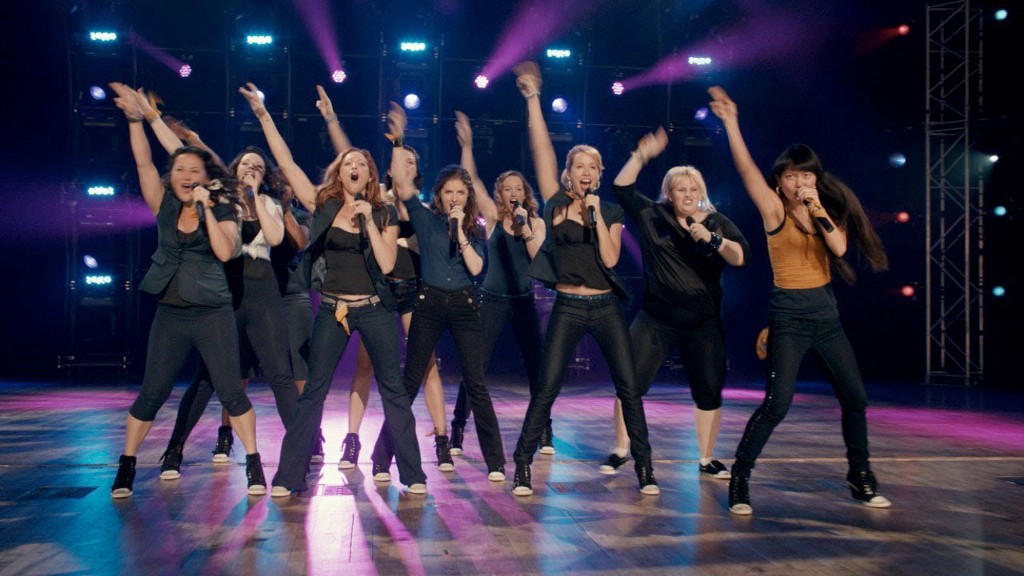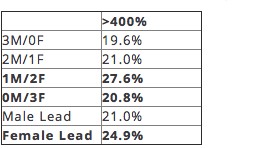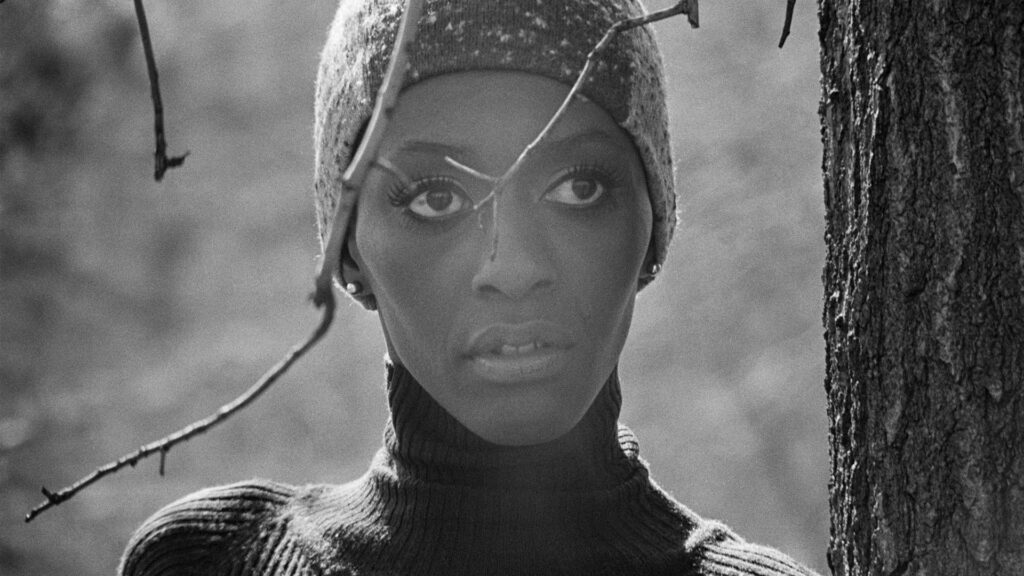
The following is cross-posted from The Black List with permission. Some edits have been made for clarification purposes.
It seems both in practice and belief that producers and executives are hesitant to place resources in female-driven movies. By the numbers, there are fewer female-led movies and even fewer big-budget, female-led movies.
The rationalization always seems to be that women will see male-dominated movies, but men won’t see female-dominated movies. But is this true? Are you smarter to greenlight male-dominated movies over female-dominated ones? What do the numbers tell us?
Well, let’s start by taking a look at the landscape of films released theatrically. Via IMDb we’re able to pull some metrics as proxies. IMDb lists the top three stars of each movie, and from that we can get a gauge on which movies are female-led. While it’s not a perfect measurement tool (sometimes the top-billed cast aren’t really the most prominent actors or they’re not always listed in order of most prominent, though largely they are), it gives us a decent idea of which movies are female-driven. Other studies have looked at the Bechdel test as a proxy, but the reason I like the “IMDb star test” is that it hopefully provides two indicators:
- It shows how the film is being marketed, whether the studio is saying this is a movie about women, having women in the lead roles, etc.
- It shows who’s top-billed. It gives a sense of the hierarchy of the stars. When women are placed in the top-billed position, it means that they have been selected, in a sense, to outrank other actors.
Let’s look at a set of about 4,000 movies (for which we have budget data), broken down by the production budget and gender of the three stars (female-driven bolded) to get a sense of the breakdown of the movies by gender:

On the low-budget end, there are about twice as many male-led films being released, whereas on the highest end, it’s about ten times as many. In fact, there are no completely female movies (all 3 stars being women) above $150 million in the data set I tracked, while there are clearly a significant number of completely male films. (The relative numbers should be telling even if the absolute numbers aren’t completely exhaustive).
It’s not new to say, but this obviously seems pretty ridiculous given that women represent 50% of the population and moviegoers.
Well, maybe producers know something we don’t. Maybe female-driven movies just alienate men, and thus don’t return as well as male-driven movies. Let’s check it out by breaking down the movies not by budget, but by ROI (return on investment, equal to worldwide box office divided by production budget).
In order to get rid of any crazy outliers, I’ve limited it to films with at least a $1 million budget and domestic distribution of at least 500 theaters (via Box Office Mojo). I’ve also limited it to films released after 1/1/2000 so that we’re not dealing with a completely different movie landscape.
We see that female-led and female-majority films tend to have higher percentages of winners and home runs. One basic barometer is the percentage of films that return less than their production budget — that is, they lose money (anything less than 100% ROI). We can see that female-led films have a lower percentage of films that lose money than male-led films do. That means there are fewer losers with a female lead.
What’s more, check out the films that have all three top-billed female actors (0M3F). Those are movies where the top three stars are all female. That red bar is by far the lowest. All in all, this means that female-driven movies actually have less risk of losing money.
Let’s look at the same chart across various budgets, since we know that female-led movies will be in lower-budget ranges.
On the lower end, the trend holds. This seems logical, since most of the female-driven films end up being smaller movies.
But even middle budget movies continue the trend.
When we eliminate small-budget films, you can start to see that gender has less of an impact on returns, though having 3 lead females still has by far the lowest loser rate.
Well, maybe male-dominated movies have more huge successes and they compensate for the losers? It doesn’t appear so. If we look at completely male-dominated films (3M0F), we can see that they actually don’t have more home runs. Again, let’s use 400% as a potential threshold for super-successful movies and see what percent of each category makes more than it:
Female films have a higher percentage of super-successful movies. Further, having all female stars makes for a better return than all-male casts. Having all male stars, in fact, yields the lowest percentage of home runs.
Of course, one can always argue that fewer huge successes are needed at the high-budget level to make up for losses. But the truth is that there aren’t enough female-led, high-budget films to get any meaningful answer.
There are lots of ways to look at the financial success of films by gender, and this is just one way. It may be that there’s such an undersupply of female-driven movies that people will go to see them regardless. That could possibly contribute to the financial success of female-driven films. But what’s also clear is that there is an incredible dearth of female-driven movies, undeniably so and in such a great magnitude that I think it’s hard to argue that this market is anywhere near saturated.
If we’re talking strictly numbers — and I’m sure producers often cite “numbers” to push male-driven movies through — well, the data actually says we minimize downside risk and increase upside potential when making female-driven movies.
So if we want to be smart about money, we should greenlight as many female-driven movies as we can until the numbers tell us we’ve hit a saturation point, which I imagine is a long way away.







